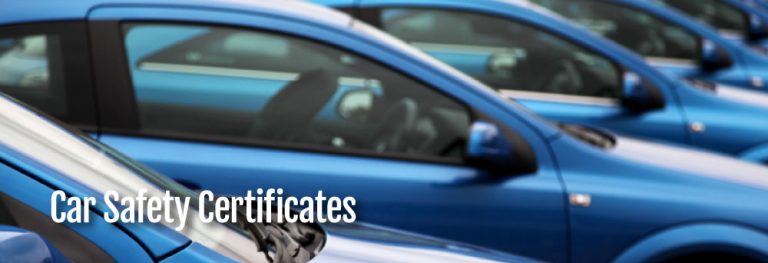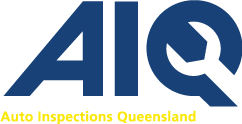What is a Safety Certificate?
20 July, 2015
Safety Certificates explained.
Safety Certificates, also referred to as a Roadworthy Certificate, is a legal document that shows or ensures the vehicle you are registering or selling meets certain minimum safety standards. This article will discuss what you need to know about Safety Certificates, maintaining car safety, and Queensland’s vehicle transfer and selling regulations.

All vehicles for sale are required to have a Roadworthy Certificate. This applies all vehicles advertised for sale, be it online, in a public place, in print media, or a simple ‘for sale’ sign on the vehicle itself. Whether you are selling a Sedan, Ute, coupe or caravan, each vehicle type requires a Safety Certificate. It is also required to obtain a Safety Certificate when re-registering a vehicle.
THERE ARE 3 CLASSES OF SAFETY CERTIFICATES:
- Cars- light vehicles up to 4,500 kg gross vehicle mass
- Motorcycles
- Caravans and trailers with an aggregate trailer mass of 750 to 3,500 kg
In addition to the 3 listed above, you have a Heavy Vehicle Certificate of Inspection (COI).
Queensland Government has set down specific safety standards. The standards include:
- Proper Brakes – Brakes should be free of noise such as chatter or grinding. Brakes should also stop you quickly. For example, breaks should have the vehicle stopped at 73 meters at 96 kmh. Check it for signs of scoring (lines and gouges) and burning (discolouration) on the pads of disk breaks.
- Proper Tyres – Tyres should have a minimum of one-sixteenth-of-an-inch of tread. If a tyre has less than that amount, it should be replaced. One can tell the tread depth by identifying treadwear bars. Treadwear bars are solid lines of rubber that become exposed by wear. When they appear as full bars across the face, it should be replaced.
- Steering that Works – Steering should be smooth and free from hints of twitching or pulling. When you let go of the wheel, your car should remain centered and head straight.
- A Damage-free and Clear Windscreen – A clear, damage-free windscreen is self-evident. There should be no cracks, scarring or stars. For the last two decades or more, windscreens have been part of the auto’s stress structure. A broken windscreen compromises the integrity of the vehicle and as such is a mandatory repair.
- Working Lights – Daytime headlamps must work correctly. If bulbs are burned out, they must be replaced. Tail lamps, brakes lamps, road lights, turn signal lights, and side-marker lamps must also function correctly.
- Damage and Rust-free Body – If a vehicle displays rust, it means there could be corrosion on the frame. All corrosion must be treated and eliminated, and all body damage must be treated prior to selling.
Maintaining minimum safety standards is likely insufficient.
To ensure vehicle safety requires going beyond the very minimum. Include additional measures to enhance the inspection. For example, the following items can increase reliability and safety:
- Belts, hoses and fluids – The belts must be free of shine. Shiny areas indicate the belt tension is off, and pulleys are slipping, causing heat and the belt to shine. Hoses must be firm and free of obvious soft spots. Change belts with shine and hoses with soft spots.
- Wiper blades and assemblies – The wiper blades must sweep smoothly and provide a clear, streak-free windscreen. Replace the blades if the windscreen is not completely clear.
- Warning devices – Warning devices such as the horn, signal flashers and turn signals should be working correctly.
- Exhaust system – Many overlook the vehicle’s exhaust system, taking it for granted. The exhaust system provides key back-pressure so that the motor operates correctly. Without back-pressure balance, the engine booms and the exhaust note is off. A weakened exhaust system causes the engine to perform poorly. A poorly performing engine may be in violation of air quality regulation. For these reasons and more, problems with the entire exhaust need to be fixed.
- Shocks and suspension – The shocks and suspension enhance the vehicle’s handling. The shock absorbers keep your tyres in proper contact with the motorway surface; suspension keeps the wheels firmly planted on the road. Both are essential for quick reaction times and safe handling.
- Entertainment systems – Entertainment systems have become important over the last decade, as they provide more than entertainment. They allow authorities and the driver to know the cars location. Although this is not as critical a component to car safety as brakes, entertainment systems should still be operating correctly for optimal safety.
These final six checks go above and beyond Queensland Government standards, however, by including extra systems to check you are enhancing the value of the vehicle. Moreover, completing additional safety checks increases the vehicles value.
A car be advertised for sale only when a it has passed a safety inspection and received a safety certificate. The certificate should be displayed on:
- The front forks or guard on a motorbike
- The drawbar on caravans and trailers
- The windscreen or window on a car
The safety certificate information should be included on ads and online postings advertising a vehicle for sale. Failure to obtain or display the Certificate can be costly. The penalty for selling a motor vehicle without the proper documents is $560.
You cannot sell or register a vehicle if it fails a safety inspection. If you need to drive an unregistered vehicle on public roads to take it too a repair shop, you must get an unregistered vehicle permit. You can find safety inspection facilities at www.qld.gov.au/transport/registration/roadworthy.
Additional key elements of safety certificates:
- Certificates are only valid for one vehicle sale. If it is sold a second time, a second certificate is needed.
- Certificates are not needed if vehicles are sold dealer-to-dealer or if they are sold for parts.
- Certificates expire for all sellers, except dealers, in two months or 2,000 km, whichever comes first, from the date of issue.
- Certificates expire for dealers in three months or 1,000 km, whichever comes first, from the date of issue.
Vehicles can be transferred without certificates if they are sold within an exempt area; if the transaction is between spouses, or if the location is remote.
For further information, head to this website: www.qld.gov.au/transport/registration/roadworthy. It will provide you with ample information about Safety Certificates.

Top 10 tips to assist your car in passing the Mobile Roadworthy Test





